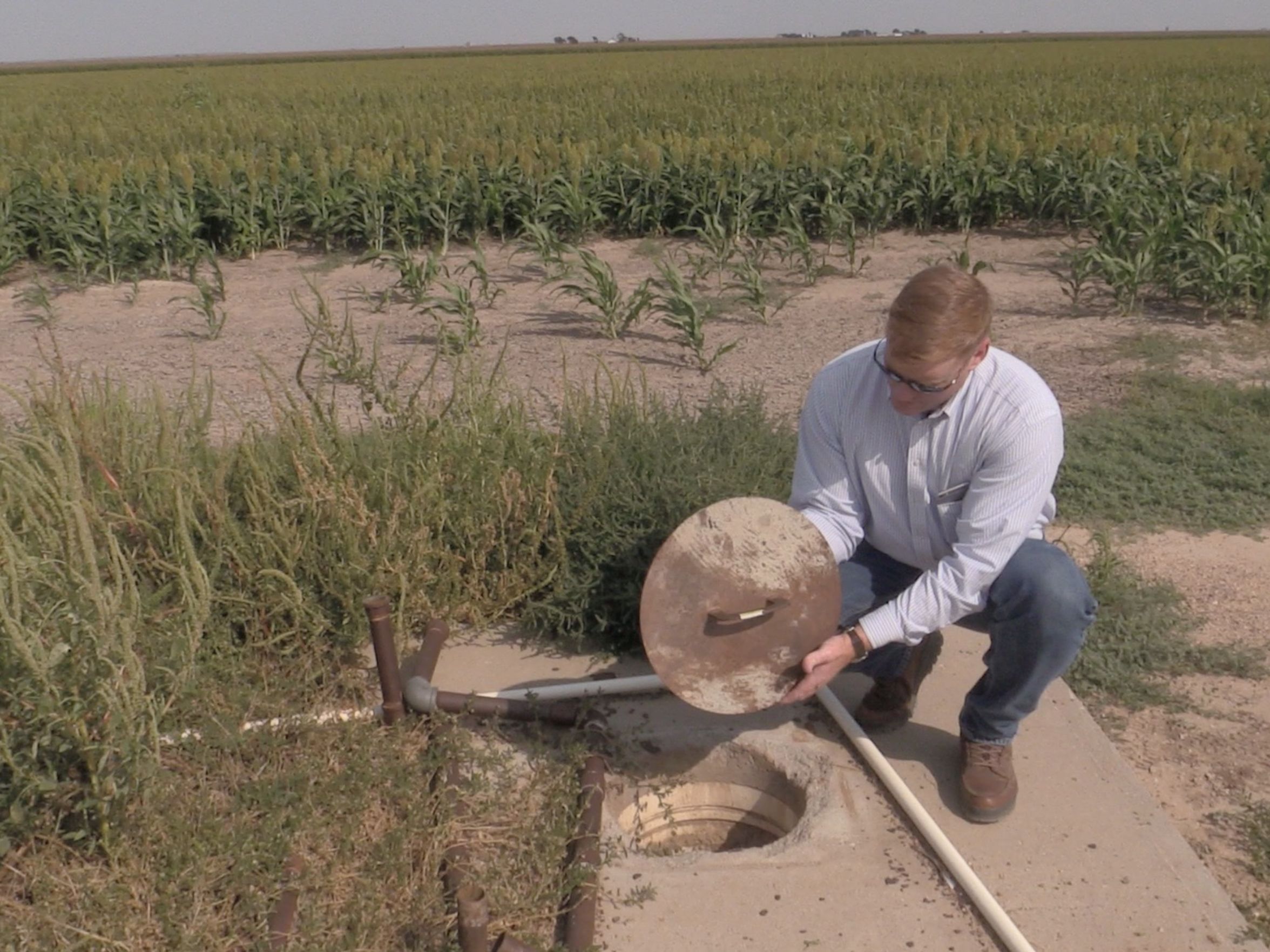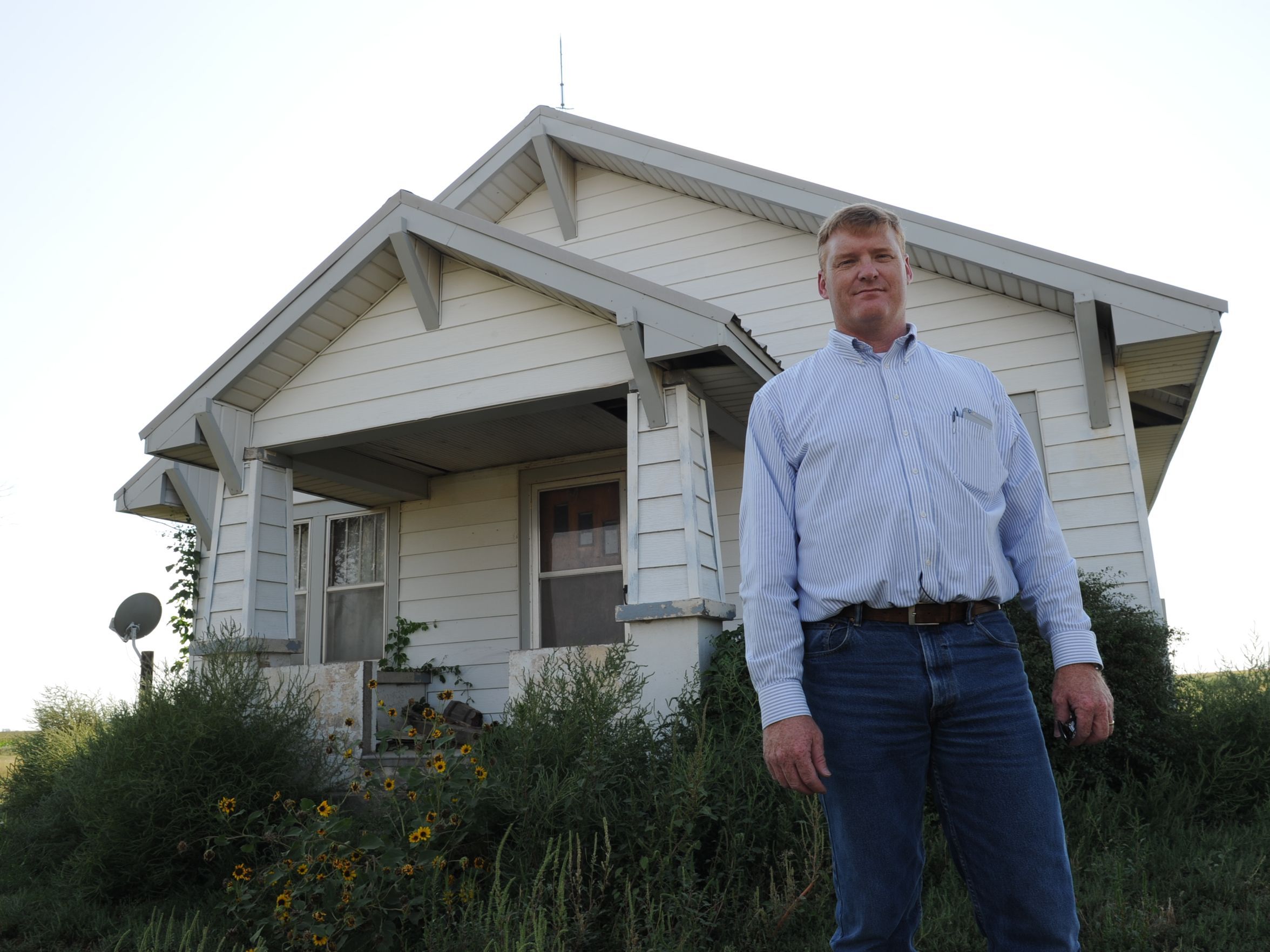SUBLETTE, Kansas – Just before 3 a.m., Jay Garetson’s phone buzzed on the bedside table. He picked it up and read the text: “Low Pressure Alert.”
He felt a jolt of stress and his chest tightened. He dreaded what that automated message probably meant: With the water table dropping, another well on his family’s farm was starting to suck air.
The Garetson family has been farming in the plains of southwestern Kansas for four generations, since 1902. Now they face a hard reality. The groundwater they depend on is disappearing. Their fields could wither. Their farm might not survive for the next generation.
At dawn, Jay was out among the cornfields at the well, trying to diagnose the problem. The pump was humming as it lifted water from nearly 600 feet underground. He turned a valve and let the cool water run into his cupped hands. Just as he had feared, he saw fine bubbles in the water.
“It’s showing signs of weakening,” he said sadly, standing in the shoulder-high corn.
“This’ll last another five or 10 years, but not even at the production rate that we’re at here today,” he said. “It’s just a question of how much time is left.”
Read the full story and view the full interactive presentation with photos and video here.





